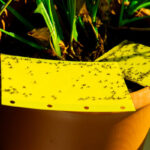Sewer flies, often found buzzing around drains and stagnant water sources in homes, are a common nuisance. These small, fuzzy insects, also known as drain flies or moth flies, thrive in moist environments. Understanding their lifespan is key to effectively controlling infestations.
The Sewer Fly Life Cycle Explained
Adult sewer flies have a relatively short lifespan, typically living for around 20 days. During this period, their primary focus is reproduction, and they usually breed only once, often within hours of emerging as adults. Female sewer flies are capable of laying between 30 to 100 eggs at a time. These eggs are strategically deposited just above the waterline in moist drains and other suitable breeding grounds.
Within approximately 48 hours, these eggs hatch into larvae, commonly referred to as drain worms. This larval stage is the longest part of their life cycle, lasting from 9 to 15 days. The duration can vary depending on several factors including the specific species of sewer fly, the ambient temperature, and the overall environmental conditions. During this stage, the larvae feed on organic matter found in the stagnant water and drain sludge.
Following the larval stage, sewer flies enter the pupal stage. This is a transitional phase, and it is quite brief, lasting only about 20 to 40 hours. During the pupal stage, the insect undergoes metamorphosis to transform into its adult form.
Factors Influencing Sewer Fly Lifespan
While the average lifespan of an adult sewer fly is around 20 days, this can be influenced by environmental conditions, particularly temperature and the availability of food and moisture. Warmer temperatures may slightly shorten the larval and pupal stages, but generally, the adult lifespan remains consistent. The availability of breeding sites and food sources significantly impacts the overall population and persistence of sewer flies rather than the lifespan of individual adults.
Implications of Sewer Fly Lifespan for Infestation Control
Understanding that adult sewer flies live for about 20 days and reproduce quickly highlights the importance of targeting breeding sites for effective control. Simply eliminating adult flies will only provide a temporary solution as new flies will continuously emerge from eggs and larvae developing in drains and stagnant water.
To effectively manage sewer fly infestations, it is crucial to:
- Identify and Eliminate Breeding Sites: Focus on locating and thoroughly cleaning drains, sinks, toilets that are infrequently used, and any areas with standing water.
- Clean Drains Regularly: Use drain cleaning tools and enzymatic drain cleaners to remove organic build-up that serves as food for larvae.
- Prevent Stagnant Water: Repair leaks promptly and ensure proper drainage to eliminate potential breeding grounds.
While sewer flies themselves are not known to transmit diseases, their presence is undesirable and can be indicative of unsanitary conditions. Controlling their breeding sites is the most effective long-term strategy to reduce their populations and prevent infestations. For persistent problems, consulting pest control professionals is recommended.
